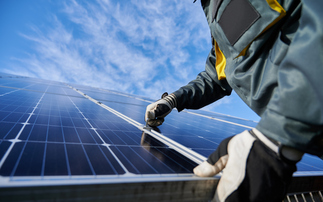Europe's solar market may be slowing at a time when huge opportunities for the technology are popping up all around the world
This performance is in stark contrast to Germany, which already hosts nearly half of Europe's solar capacity, with 45.4 per cent in 2013. But Germany will start to lose its stronghold, owning just one third of Europe's capacity by 2025.
Gaëtan Masson, head of business intelligence at the European Photovoltaic Association, blamed deep cuts to European subsidies for the declining market. "In a number of European countries, harsh support reduction, retrospective measures and unplanned changes to regulatory frameworks that badly affect investors' confidence and PV investments' viability have led to a significant market decrease," he said. "This is particularly the case for Italy - third global market in 2012 - which experienced a 70 per cent market decrease compared to the year before. Germany - formerly the top global market - also experienced in 2013 a steep PV market decrease (57 per cent decrease compared to 2012), originating from intentional regulatory changes."
So after 10 years with Europe leading the global market, where should solar players look to now if they want to tap into fresh opportunities?
Both North and South America are predicted to see PV capacity grow more than 10-fold over the coming years, climbing from 13.1GW in 2013 to 57GW in 2020 and reaching 138.8GW in 2030, predicts GlobalData.
The US is expected to continue to hold at least 80 per cent of the American market over the next 10 years, but emerging economies such as Brazil and Mexico are also tipped for strong growth.
Brazil in particular is expected to see a sharp rise in installations over the next 10 years as a result of the government's renewable energy auctions. The country's Ministry of Mines and Energy approved 122MW of solar PV capacity in its first solar-only auction in 2013, with solar projects receiving $98/MWh for power generation.
Sunny Saudi Arabia is also set for a solar power boom over the next decade, despite being the world's second largest producer of crude oil. Last year, the government revealed plans to ramp up installed solar capacity to 41GW by 2032, of which 25GW would come from solar thermal and 16GW photovoltaic.
However, as long as the sun shines, you can be sure China will be doing its utmost to collect it and convert it into electricity. GlobalData predicts the Asia Pacific region will increase its capacity from 19.6GW in 2012 to a massive 420.6GW by 2030 - most of which will be installed in China.
According to preliminary figures gathered by the European Photovoltaic Industry Association, the Asia Pacific region overtook Europe as the solar market leader last year, and represented 57 per cent of the market compared to Europe's 28 per cent share.
Unsurprisingly, most of that growth was recorded in China, which has seen an explosion in solar power installation over the past three years. China installed 11.3GW in the past year alone, which if you remember, is the same amount that the UK can expect to have in total by 2025.
Japan, meanwhile, is also substantially growing its solar market, installing around 6.9GW last year, nearly doubling total capacity, thanks to government support schemes. It is expected to add another 10GW this year.
Much of this growth is driven by government policies, but it is also increasingly enabled by huge improvements in solar technology that mean it can compete on cost with conventional power generation in regions with high levels of solar energy. With many engineers predicting that improvements in solar cell efficiency and energy storage technologies will continue, hopes remain that a recovery in the European market could quickly materialise.
But even if the outlook is looking a little dimmer for the European solar market, it is clear the global prospects for the technology remain as bright as ever.










